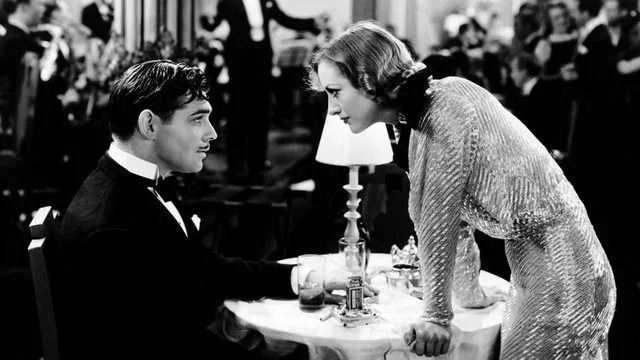 |
| Clark Gable and Jean Harlow in Hold Your Man |
Cast: Clark Gable, Jean Harlow, Stuart Erwin, Dorothy Burgess, Muriel Kirkland, Garry Owen, Barbara Barondess, Elizabeth Patterson, Blanche Friderici, Theresa Harris, George Reed. Screenplay: Anita Loos, Howard Emmett Rogers. Cinematography: Harold Rosson. Art direction: Merrill Pye. Film editing: Frank Sullivan.
Part sexy pre-Code romp and part weepie melodrama, Hold Your Man succeeds on both counts. Clark Gable plays small-time con man Eddie Hall, who while fleeing from the cops winds up in the apartment of Ruby Adams (Jean Harlow), while she's taking a bath. He winds up there for good until he slugs an intruder into her apartment, accidentally killing him. He takes it on the lam and she takes the rap, going to a women's prison where she learns that she's carrying his child. The denouement, in which Ruby's fellow inmates help unite her with Eddie, is full of suspense. In a surprisingly almost enlightened twist, the heroine of this section of the movie is a Black prisoner, Lily Mae (Theresa Harris), whose father, a minister (George Reed), just happens to be at the prison for visitors' day, and thus available with a little maneuvering to marry Ruby and Eddie. (I say "almost enlightened" because neither Harris nor Reed gets a screen credit, and an alternate ending was filmed for Southern release, in which the minister was played by Henry B. Walthall.) The switch from hijinks among lowlifes to redemptive love story is a little jarring, but Harlow was never more in her element, and Gable's smirky charm is engaging.







































